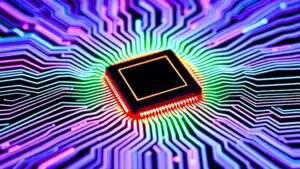Temperature, humidity, and motion sensors are fundamental components in modern technological systems, serving crucial roles in everything from home automation to industrial control applications. These devices convert environmental conditions into electrical signals that can be processed by electronic systems to provide valuable data and trigger automated responses. This article examines the working principles, types, and applications of these three sensor categories, revealing their significance across various industries and everyday uses.
#1
These sophisticated devices transform thermal energy into electrical signals that can be processed and interpreted by electronic systems. While traditional thermometers offer basic temperature readings, modern temperature sensors provide substantially higher accuracy and can seamlessly integrate into complex technological ecosystems for automated temperature control and monitoring.
Temperature Sensors: Principles and Applications
Temperature sensors function by providing readings through electrical signals generated when temperature changes occur. These devices typically contain two metals that produce electrical voltage or resistance in response to temperature variations. The fundamental operating principle involves measuring voltage across diode terminals, where an increase in voltage corresponds to a temperature increase, followed by a voltage drop between the transistor terminals and the emitter in a diode.These sophisticated devices transform thermal energy into electrical signals that can be processed and interpreted by electronic systems. While traditional thermometers offer basic temperature readings, modern temperature sensors provide substantially higher accuracy and can seamlessly integrate into complex technological ecosystems for automated temperature control and monitoring.
#2
The operation of these sensors involves precise electrical measurements, where temperature changes cause corresponding alterations in electrical properties. This relationship allows for accurate temperature determination across a wide range of values, from extremely cold environments to high-temperature industrial settings.
Types and Working Mechanisms
Temperature sensors come in several varieties, each with specific advantages and applications. Thermocouples generate voltage when two different metals are joined and exposed to temperature changes, while Resistance Temperature Detectors (RTDs) measure temperature based on predictable changes in electrical resistance. Thermistors, which are semiconductor devices, exhibit significant resistance changes with temperature fluctuations, making them highly sensitive for specific applications.The operation of these sensors involves precise electrical measurements, where temperature changes cause corresponding alterations in electrical properties. This relationship allows for accurate temperature determination across a wide range of values, from extremely cold environments to high-temperature industrial settings.
#3
The versatility of temperature sensors extends to environmental monitoring, geotechnical applications, and renewable energy systems, where they provide critical data for system performance and safety monitoring. Their reliability and accuracy make them indispensable components in maintaining specific temperatures across various industries, from food processing to pharmaceutical manufacturing.
Practical Applications
Temperature sensors have become ubiquitous in modern life, found in numerous household appliances and industrial systems. In residential settings, they serve as essential components in microwaves, refrigerators, and water heaters, ensuring optimal operation and safety. In commercial and industrial environments, these sensors play critical roles in manufacturing processes, HVAC systems, and medical applications where precise temperature control is vital.The versatility of temperature sensors extends to environmental monitoring, geotechnical applications, and renewable energy systems, where they provide critical data for system performance and safety monitoring. Their reliability and accuracy make them indispensable components in maintaining specific temperatures across various industries, from food processing to pharmaceutical manufacturing.
#4 Humidity sensors are specialized devices designed to measure moisture content in the air, operating on the principle of detecting changes in electrical properties caused by the presence of water vapor. These sophisticated instruments provide crucial environmental data for numerous applications requiring precise moisture control. IMG Source: Research Dive
Humidity sensors are specialized devices designed to measure moisture content in the air, operating on the principle of detecting changes in electrical properties caused by the presence of water vapor. These sophisticated instruments provide crucial environmental data for numerous applications requiring precise moisture control. IMG Source: Research Dive
Humidity Sensors: Measurement Technologies
 Humidity sensors are specialized devices designed to measure moisture content in the air, operating on the principle of detecting changes in electrical properties caused by the presence of water vapor. These sophisticated instruments provide crucial environmental data for numerous applications requiring precise moisture control. IMG Source: Research Dive
Humidity sensors are specialized devices designed to measure moisture content in the air, operating on the principle of detecting changes in electrical properties caused by the presence of water vapor. These sophisticated instruments provide crucial environmental data for numerous applications requiring precise moisture control. IMG Source: Research Dive
#5
1. Relative Humidity Measurement: Most humidity sensors assess relative humidity levels by utilizing materials that modify their electrical characteristics, such as capacitance or resistance, in response to changes in ambient moisture levels. This approach compares the current air moisture to its maximum capacity at a specific temperature, providing context-specific humidity readings.
2. Absolute Humidity Measurement: Some specialized sensors measure absolute humidity by gauging the water vapor mass in a defined air volume. These instruments are crucial for applications requiring precise moisture level measurements independent of temperature variations, such as scientific research and specialized industrial operations.
Fundamental Measurement Approaches
Humidity sensors operate through two primary measurement approaches:1. Relative Humidity Measurement: Most humidity sensors assess relative humidity levels by utilizing materials that modify their electrical characteristics, such as capacitance or resistance, in response to changes in ambient moisture levels. This approach compares the current air moisture to its maximum capacity at a specific temperature, providing context-specific humidity readings.
2. Absolute Humidity Measurement: Some specialized sensors measure absolute humidity by gauging the water vapor mass in a defined air volume. These instruments are crucial for applications requiring precise moisture level measurements independent of temperature variations, such as scientific research and specialized industrial operations.
#6
Other common varieties include resistive humidity sensors, which measure the electrical resistance changes in hygroscopic materials; thermal conductivity sensors, which detect humidity through variations in thermal conductivity of air; and optical humidity sensors, which measure light absorption patterns affected by moisture content. Each type offers specific advantages for different application requirements.
Sensor Varieties and Mechanisms
Among the various types of humidity sensors, capacitive sensors are particularly prevalent. These devices incorporate a thin film of polymer or metal oxide positioned between two conductive plates. When moisture levels change, the film's dielectric constant alters accordingly, affecting the capacitance measurement. This change is precisely quantified and transformed into an accurate humidity reading.Other common varieties include resistive humidity sensors, which measure the electrical resistance changes in hygroscopic materials; thermal conductivity sensors, which detect humidity through variations in thermal conductivity of air; and optical humidity sensors, which measure light absorption patterns affected by moisture content. Each type offers specific advantages for different application requirements.
#7
Implementation and Use Cases
Humidity sensors find essential applications across numerous industries and settings. They serve as critical components in HVAC systems for maintaining comfortable indoor environments, weather stations for meteorological monitoring, and industrial processes where moisture levels must be precisely controlled. Their implementation in agricultural settings helps optimize growing conditions, while their use in medical devices and pharmaceutical manufacturing ensures product quality and efficacy.
#8
Motion Sensors: Components and Detection Methods
Motion sensors are sophisticated electronic devices designed to detect and measure movement in their surroundings. Unlike many sensor types that can function as standalone units, motion sensors typically operate as embedded systems comprising three essential components working in concert.
#9
1. Sensor Unit: This fundamental component detects changes in the surrounding environment, serving as the "eyes" of the system. Various sensing technologies are employed, including passive infrared (PIR) sensors that detect body heat, microwave sensors that emit and receive microwave radiation, ultrasonic sensors that use sound waves, and dual-technology sensors that combine multiple methods for increased accuracy.
2. Embedded Computer: Also known as the processing unit or control unit, this component analyzes signals received from the sensor unit and makes determinations based on predefined criteria. It processes sensor data to identify genuine motion events and filters out environmental noise. This computational element typically incorporates microcontrollers, microprocessors, or specialized integrated circuits programmed with sophisticated algorithms for motion detection and processing.
3. Hardware Component: This encompasses the physical enclosure, mounting mechanisms, power supply, and additional features. The hardware provides structural support and interfaces necessary for proper functioning and installation, protecting the sensitive electronics while enabling proper sensor positioning and operation.
Core System Architecture
The architecture of motion sensors consists of three primary components:1. Sensor Unit: This fundamental component detects changes in the surrounding environment, serving as the "eyes" of the system. Various sensing technologies are employed, including passive infrared (PIR) sensors that detect body heat, microwave sensors that emit and receive microwave radiation, ultrasonic sensors that use sound waves, and dual-technology sensors that combine multiple methods for increased accuracy.
2. Embedded Computer: Also known as the processing unit or control unit, this component analyzes signals received from the sensor unit and makes determinations based on predefined criteria. It processes sensor data to identify genuine motion events and filters out environmental noise. This computational element typically incorporates microcontrollers, microprocessors, or specialized integrated circuits programmed with sophisticated algorithms for motion detection and processing.
3. Hardware Component: This encompasses the physical enclosure, mounting mechanisms, power supply, and additional features. The hardware provides structural support and interfaces necessary for proper functioning and installation, protecting the sensitive electronics while enabling proper sensor positioning and operation.
#10
This particular model exemplifies the sophistication of modern motion sensors, featuring adjustable time-delay functionality, internal photosensors for smart switch control, and LED indicators for operational status monitoring. The integration of multiple PIR sensors significantly enhances detection sensitivity and range, ensuring reliable motion tracking across larger spaces.
Detection Technologies
The most common motion detection technology is Passive Infrared (PIR), which identifies the infrared radiation naturally emitted by objects with heat signatures. Advanced PIR systems, such as the PIR-234L-WF, incorporate multiple sensors to increase sensitivity and range, detecting infrared waves generated by human bodies within diameters of approximately 14 meters and offering 360° coverage for comprehensive indoor detection.This particular model exemplifies the sophistication of modern motion sensors, featuring adjustable time-delay functionality, internal photosensors for smart switch control, and LED indicators for operational status monitoring. The integration of multiple PIR sensors significantly enhances detection sensitivity and range, ensuring reliable motion tracking across larger spaces.
#11
In smart building environments, motion sensors can be configured to automatically control lighting, HVAC systems, and security features based on occupancy detection. Advanced models offer integration with various communication interfaces and protocols, including RS-485, Ethernet, and Wi-Fi, enabling seamless incorporation into existing automation infrastructures.
Practical Implementations
Motion sensors serve as cornerstone components in home and business security systems but extend far beyond security applications. They enable touchless operation in devices ranging from smartphones to paper towel dispensers, and provide crucial input for gaming consoles and virtual reality systems.In smart building environments, motion sensors can be configured to automatically control lighting, HVAC systems, and security features based on occupancy detection. Advanced models offer integration with various communication interfaces and protocols, including RS-485, Ethernet, and Wi-Fi, enabling seamless incorporation into existing automation infrastructures.
#12
Integrated Sensor Systems: Combining Multiple Functions
The evolution of sensor technology has led to the development of integrated multi-function sensors that combine temperature, humidity, motion, and other sensing capabilities within a single device. These comprehensive sensing solutions provide more efficient environmental monitoring while reducing installation complexity and system fragmentation.
#13 Products like the Aeotec 6-in-1 Z-Wave sensor exemplify this integration trend, offering comprehensive environmental monitoring by simultaneously tracking motion, temperature, humidity, light levels, UV radiation, and vibrations in a single compact unit. These advanced devices provide several significant advantages over discrete sensor deployments:
Products like the Aeotec 6-in-1 Z-Wave sensor exemplify this integration trend, offering comprehensive environmental monitoring by simultaneously tracking motion, temperature, humidity, light levels, UV radiation, and vibrations in a single compact unit. These advanced devices provide several significant advantages over discrete sensor deployments:
1. Reduced overall costs compared to purchasing individual sensors for each function
2. Simplified installation and maintenance requirements
3. Consistent data collection from a single point, eliminating measurement discrepancies
4. Streamlined integration with smart home or building management systems
5. Reduced visual impact and space requirements
The Aeotec sensor ($60) represents the premium tier of these integrated solutions, offering exceptional performance across all sensing domains. More budget-conscious alternatives like the Monoprice multi-sensor ($30) provide similar functionality at a lower price point, though reviews suggest potential trade-offs in reliability and accuracy. IMG Source: Amazon.com
Multi-purpose Sensor Solutions
 Products like the Aeotec 6-in-1 Z-Wave sensor exemplify this integration trend, offering comprehensive environmental monitoring by simultaneously tracking motion, temperature, humidity, light levels, UV radiation, and vibrations in a single compact unit. These advanced devices provide several significant advantages over discrete sensor deployments:
Products like the Aeotec 6-in-1 Z-Wave sensor exemplify this integration trend, offering comprehensive environmental monitoring by simultaneously tracking motion, temperature, humidity, light levels, UV radiation, and vibrations in a single compact unit. These advanced devices provide several significant advantages over discrete sensor deployments:1. Reduced overall costs compared to purchasing individual sensors for each function
2. Simplified installation and maintenance requirements
3. Consistent data collection from a single point, eliminating measurement discrepancies
4. Streamlined integration with smart home or building management systems
5. Reduced visual impact and space requirements
The Aeotec sensor ($60) represents the premium tier of these integrated solutions, offering exceptional performance across all sensing domains. More budget-conscious alternatives like the Monoprice multi-sensor ($30) provide similar functionality at a lower price point, though reviews suggest potential trade-offs in reliability and accuracy. IMG Source: Amazon.com
#14
These devices typically connect to smart home hubs using wireless protocols such as Z-Wave and can integrate with numerous platforms including SmartThings, HomeSeer, openHAB, and Vera. This compatibility ensures flexibility in system design and allows for future expansion or platform migration without requiring sensor replacement.
Smart Home Integration
In smart home environments, these multi-purpose sensors enable sophisticated automation scenarios that would otherwise require complex networks of individual sensors. A single integrated unit can simultaneously detect motion to activate lighting, monitor temperature to adjust heating systems, and track humidity levels to trigger ventilation or dehumidification when necessary.These devices typically connect to smart home hubs using wireless protocols such as Z-Wave and can integrate with numerous platforms including SmartThings, HomeSeer, openHAB, and Vera. This compatibility ensures flexibility in system design and allows for future expansion or platform migration without requiring sensor replacement.
#15
Strategic deployment may involve placing comprehensive sensors in high-traffic or environmentally sensitive areas while using simpler, lower-cost sensors in spaces with fewer monitoring requirements. This balanced approach can optimize system performance while maintaining cost-effectiveness. Testing different sensor models before committing to full-scale deployment can also help identify the most suitable products for specific applications and environments.
Implementation Considerations
While integrated sensors offer significant advantages, implementing them throughout an entire building requires careful planning. Outfitting every room with multi-function sensors can represent a substantial investment, making it important to assess whether all sensing capabilities are needed in each space.Strategic deployment may involve placing comprehensive sensors in high-traffic or environmentally sensitive areas while using simpler, lower-cost sensors in spaces with fewer monitoring requirements. This balanced approach can optimize system performance while maintaining cost-effectiveness. Testing different sensor models before committing to full-scale deployment can also help identify the most suitable products for specific applications and environments.
#16
The integration trend toward multi-functional sensors reflects the growing demand for comprehensive environmental monitoring in compact, cost-effective packages. This convergence particularly benefits smart home and building automation applications, where streamlined installation and simplified system architecture can significantly reduce implementation barriers.
As sensor technology continues to advance, we can anticipate further improvements in accuracy, energy efficiency, miniaturization, and integration capabilities. These enhancements will expand the application scope of sensor technologies while making sophisticated environmental monitoring and automation more accessible across consumer, commercial, and industrial domains.
Conclusion
Temperature, humidity, and motion sensors represent fundamental building blocks in modern technological systems, providing essential data for automation, monitoring, and control across countless applications. These devices operate through diverse physical principles—from the electrical properties of materials responding to temperature and humidity changes to the detection of infrared radiation for motion sensing.The integration trend toward multi-functional sensors reflects the growing demand for comprehensive environmental monitoring in compact, cost-effective packages. This convergence particularly benefits smart home and building automation applications, where streamlined installation and simplified system architecture can significantly reduce implementation barriers.
As sensor technology continues to advance, we can anticipate further improvements in accuracy, energy efficiency, miniaturization, and integration capabilities. These enhancements will expand the application scope of sensor technologies while making sophisticated environmental monitoring and automation more accessible across consumer, commercial, and industrial domains.
Reactions
Reactions
1
1







